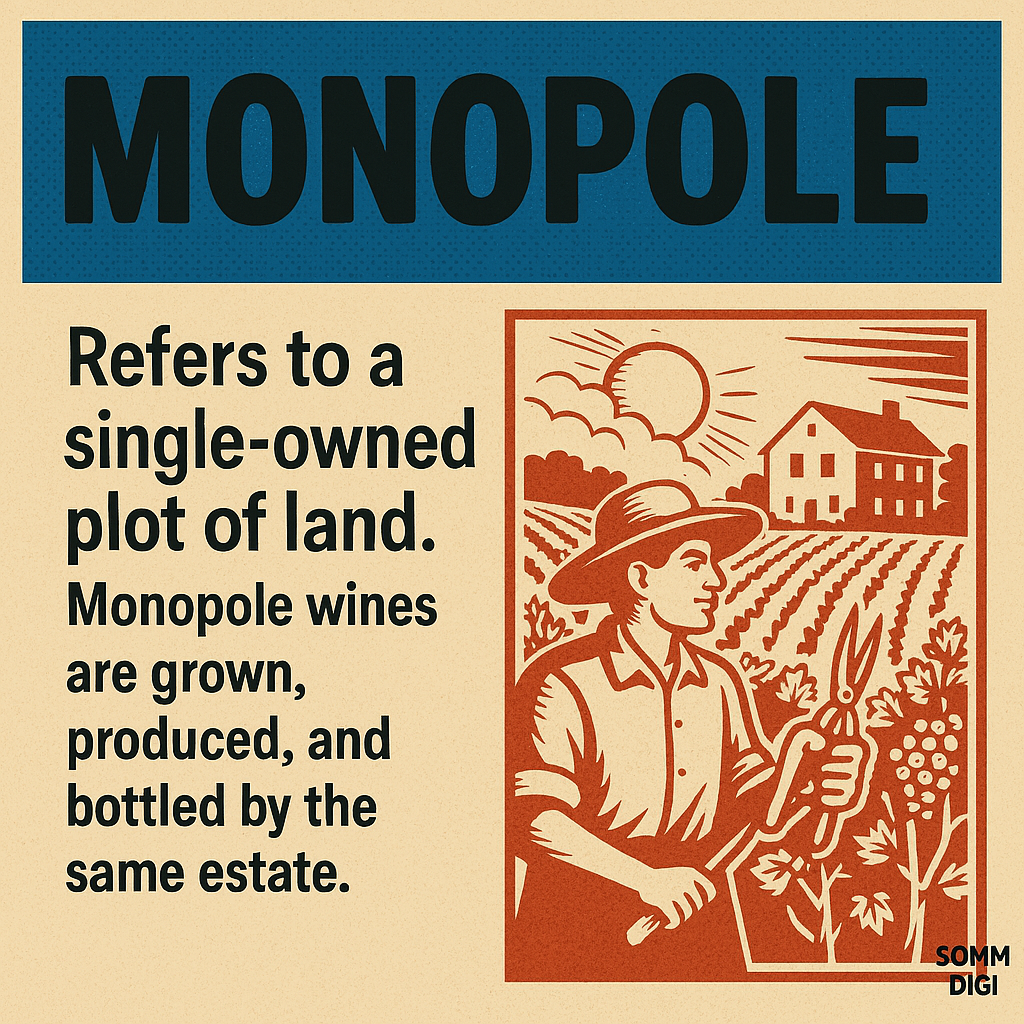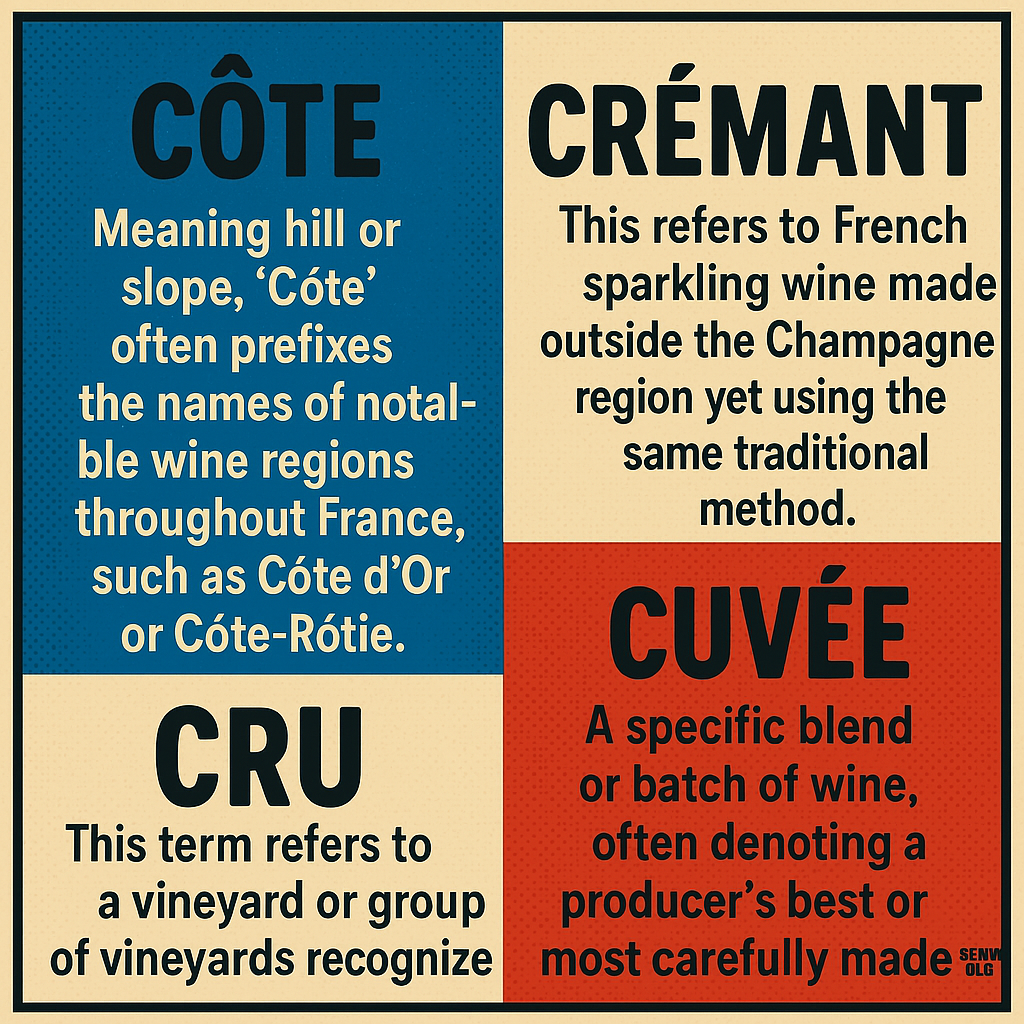From Terroir to Cépage: An Exploration of French Wine Terms
Discover the richness of French wine with our comprehensive exploration of its distinct terms and phrases. France's storied winemaking history and multifaceted wine culture have given rise to a language all its own.
'From Terroir to Cépage'’ This guide dives into the heart of the French wine vernacular, illuminating essential terms that describe the nuanced stages of viticulture and vinification, the variety of grapes, and the character of wines.
No matter your level of wine expertise, this guide will aid you in navigating the complex yet fascinating world of French wine with ease and understanding.
Level 1 French Wine Term
The New French Wine [Two-Book Boxed Set]: Redefining the World's Greatest Wine Culture
Le (vin) rouge: This is red wine in French. French reds can range from light and fruity Beaujolais to bold and robust Bordeaux, proving there's a 'rouge' for every palate.
Le (vin) blanc: This refers to white wine. Whether a mineral-heavy Chablis or a creamy Chardonnay, French white wines are a journey of flavors unto themselves.
Le (vin) rosé: Rosé wines, often light and refreshing, are a French specialty, with Provence leading the pack.
Le (vin de) champagne: French Champagne needs no introduction, and remember, it's not truly Champagne unless it's from the Champagne region!
Chablis: A distinctive, full-bodied white wine from the region of the same name in northern Burgundy.
AOC – Appellation d'Origine Contrôlée: A certification granted to certain French geographical indications for wines, cheeses, and other agricultural products, confirming the quality and authenticity of the product.
Assemblage: This refers to the blending of different grape varieties or wines. It's an art and science in winemaking that produces harmonious and balanced wines.
Barrique: This is a specific type of barrel used for aging wine. Its capacity and type of wood can influence the character of the wine.
Blanc de Blancs: This term means "white from whites". It's used for white wines made exclusively from white grapes, often seen in the production of Champagne.
Blanc de Noirs: Translating to "white from blacks", these are white wines made from black (or red) grapes. They offer a fascinating complexity and depth of flavor.
Côte: Meaning hill or slope, 'Côte' often prefixes the names of notable wine regions throughout France, such as Côte d'Or or Côte-Rôtie.
Crémant: This refers to French sparkling wine made outside the Champagne region yet using the same traditional method.
Cru: This term refers to a vineyard or group of vineyards recognized for producing high-quality wine.
Cuvée: A specific blend or batch of wine, often denoting a producer's best or most carefully made wine.
Élevage: The process of aging wine before bottling - a crucial phase that helps shape the wine's final character.
Juponé: The mushroom-like shape of a champagne cork after a few years in the bottle.
Monopole: Refers to a single-owned plot of land. Monopole wines are grown, produced, and bottled by the same estate.
Mousse: The foam or bubbles on the surface of sparkling wine. The mousse can be a sign of the wine's quality and style.
Sélection de Grains Nobles (SGN): A sweet wine made from botrytized grapes, most famously used in producing rich, sweet dessert wines in the Alsace region.
Sur Lie: Refers to aged wines on their lees (dead yeast particles) to increase complexity and body.
Vendangé à la main: Hand-harvested. This indicates a more careful selection of grapes, often leading to higher-quality wines.
Vieille Vignes: Translates to old vines, which are highly prized for their lower yields and concentration of flavors.
Vignoble: Vineyard in French. The foundation of all wine is where the magic begins.
Vin Doux Naturel (VDN): These wines are fortified during fermentation, resulting in sweet dessert wines like Muscat de Beaumes-de-Venise.
Vin de France: The most basic regional quality labeling term for wines from France as a whole.
Level 2 French Wine Term
Charpenté: Used to describe structured, robust, full-bodied wines.
Chef de culture: The vineyard manager is integral to any successful winery.
Chêne: Oak is an essential component in the aging process of many wines.
Chêne liège: Cork oak, the tree providing the material for traditional wine stoppers.
Cheval: Literally, a horse.
À l’aveugle: Refers to a blind tasting, where the tasters are unaware of the wine's identity.
Acide acétique/acide malique/acide tartrique: Various acids in wine contribute to its acidity and overall balance.
Acidité vive: Describes a wine with lively, fresh acidity.
Aération: Aeration is letting a wine 'breathe' before drinking.
Agrafe: A U-shaped metal staple used during the second fermentation of some prestige champagnes.
Agrumes: Citrus, a common descriptor for many white and rosé wines.
Ample: Describes full-bodied, rich wines.
Arômes frais/arômes fruités/arômes grillés/arômes épicés/arômes floraux/arômes minéraux/arômes de sous-bois/arômes de torréfaction: These are various aroma descriptors used to detail the smell of the wine, from fresh, fruity, grilled, spicy, floral, mineral, to undergrowth and roasted.
Assemblage: The art of blending different grape varieties or wines to achieve balance and complexity.
Biodynamique: Refers to biodynamic wine, a method of organic farming incorporating astrological influences.
Blanc de blancs/Blanc de noirs: White wine made from white grapes and white wine from black (red) grapes, respectively.
Bouquet: The sum of a wine's aromas. This evolves over time as a wine matures.
Brut: A term used to describe a dry sparkling wine.
Cépage: The grape variety used in the wine.
Chai: A wine cellar or storage area.
Chaptalisation: The process of adding sugar to grape juice before fermentation to increase the alcohol content. Named after Jean-Antoine Chaptal.
Château: A wine-producing estate.
Clos: A walled vineyard.
Coteaux: Hillsides, often seen in wine names, indicate that the vines are planted on favorable, sloped terrain.
Next, let's explore some of the French wine regions and the types of wine they produce. The term 'Coteaux' often prefixes these regions' names:
Coteaux Champenois: Still wines from the Champagne region.
Coteaux du Layon/Coteaux de l'Aubance: Sweet wines from the Loire Valley.
Coteaux d’Aix-en-Provence/Coteaux Varois/Coteaux du Verdon/Coteaux Varois en Provence/Coteaux de Pierrevert: These are predominantly rosé wines from the sunny Provence region.
Coteaux du Languedoc: This appellation covers red, white, and rosé wines from the vast Languedoc region.
Coteaux du Lyonnais: Wines from the Lyon region, which include red, white, and rosé wines.
Coteaux du Tricastin/Coteaux du Vivarais: These appellations produce red, white, and rosé wines in the Rhône Valley.
Coteaux Bourguignons: Appellation producing red and white wines from Burgundy.
Coteaux du Giennois: Known for its white wines from the Loire Valley.
Coteaux du Vendômois: Appellation that produces red, white, and rosé wines also from the Loire Valley.
Coteaux du Quercy: An appellation in the Southwest region, offering red, white, and rosé wines.
Viticulture French Wine Terms
Viticulture: The cultivation of grapes, especially for making wines.
Vigneron: A person who cultivates grapes for winemaking.
Terroir: The natural environment in which a wine is produced, including factors such as soil, topography, and climate.
Millésime: The vintage or harvest year of the wine.
Taille: Pruning, a key task in vineyard management.
Sécheresse: Drought, a critical factor in viticulture.
Rendement: Yield, the amount of grapes or wine produced per unit of vineyard area.
Porte-greffe: Rootstock, the part of the vine onto which a grape variety is grafted.
Pied de Vigne: A vine.
Pépinière: Nursery, where young vines are grown.
Palissage: Training, the system for managing vine growth during the growing season.
Macération Pelliculaire: Skin contact, a winemaking process where grape skins are left in contact with the juice.
Irrigation: Watering the vines, often necessary in hot, dry climates.
Greffage: Grafting, a common practice where the vine of one grape variety is attached to the rootstock of another.
Fermentaire: Refers to fermentation, the process by which sugar is converted to alcohol by yeast.
Ébourgeonnage: Bud thinning, the removal of unwanted grape buds.
Débourrement: Bud break, the start of the growing cycle in a vineyard.
Cru: A vineyard or group of vineyards known for their high quality.
Clone: A vine that is genetically identical to its parent, often used in the propagation of grapevines.
Cépage: The grape variety.
Vinification French Wine Terms
Vinification: The process of making wine from grapes.
Vieillissement: Aging, leaving wine in barrels, tanks, and bottles to mature.
Vendange: Harvest, the process of picking grapes.
Tonneau: A large barrel used for aging wine.
Soutirage: Racking, the process of moving wine from one container to another to remove sediment.
Récolte: Another term for the grape harvest.
Pressurage: Pressing is the process of extracting juice from grapes.
Pigeage: Punch down, breaking up the "cap" of skins floating on top of fermenting red wines.
Oenologie: Oenology, the science of wine and winemaking.
Mise en bouteille: Bottling is the final step in winemaking before the wine is sold.
Macération: Maceration is soaking grape skins and solids in wine to extract color and tannins.
Levure: Yeast, a key ingredient in winemaking responsible for fermentation.
Fût: Barrel, used for fermenting and aging wine.
Fermentation malolactique: Malolactic fermentation is a secondary process that reduces acidity and enhances flavor complexity.
Fermentation alcoolique: Alcoholic fermentation is the primary fermentation process where yeast converts sugars to alcohol.
Dégustation: Tasting, is the process of evaluating a wine's characteristics.
Cuvaison: The period of time in which red wine must remain in contact with the grape skins during fermentation.
Clarification: The process of removing solids and sediment from wine before bottling.
Chaptalisation: Add sugar to grape juice before fermentation to increase the alcohol content of the wine.
Assemblage: The blending of different grape varieties or vats of wine to achieve a certain flavor profile.
French wines carry a language all their own from the vine to the glass. With the completion of this guide, you've just expanded your wine vocabulary and are now well-equipped to understand and appreciate the nuances of French wine.
Whether perusing the wine aisle, studying for a wine exam, or engaging in a sophisticated wine conversation, these 140 French wine terms will enhance your wine-tasting and appreciation experience.
Continue to savor and explore the world of wine, and remember, as the French say, 'Le vin est la poésie de la terre' – wine is the poetry of the earth.
Santé!





